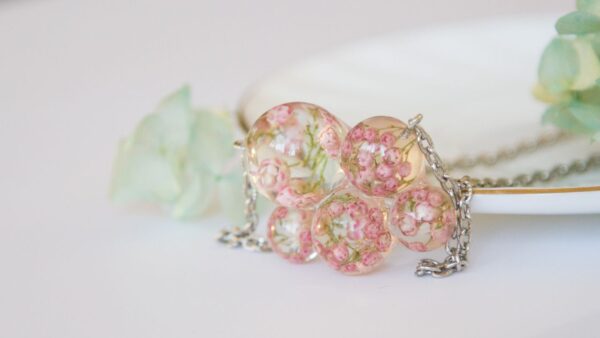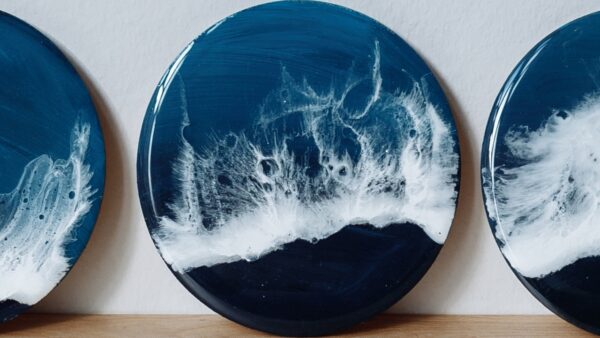How To Fix resin dimples: Complete Guide [2025]
This is a guide on how to fix those divots and dimples in resin. You just spent a ton of time and money on resin to make something.
It cured and now you have dimples and pits. Dimples in resin can be a frustrating issue for artists and craftsmen working with epoxy or other types of resin.
It happens.
These unsightly imperfections can damage the smooth, glass-like finish that resin is known for. This makes your creations appear less professional and appealing. It’s so frustrating isn’t it?
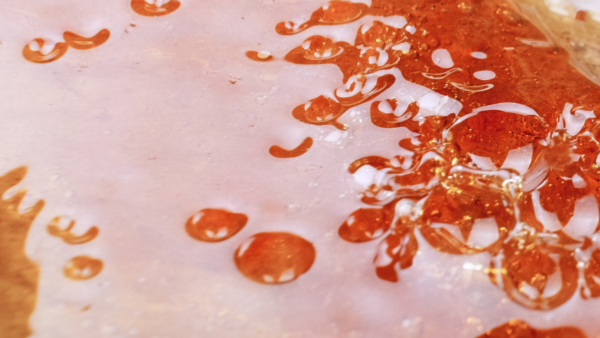
Whether you’re a seasoned resin artist or a beginner looking to perfect your craft, learning how to fix resin dimples is something you might have to do eventually.
In this guide, we’ll explore the causes of dimples in resin. We’ll also provide you with step-by-step instructions on how to effectively repair and prevent these imperfections.
Say goodbye to unsightly resin pits and dimples.

How To Fix Dimples And Pits In Resin
1. Sanding and Polishing To fix dimples
You can fix resin dimples by sanding. Sanding and polishing are techniques for fixing imperfections in cured resin, including dimples.
To apply these methods, you start by sanding the affected areas with progressively finer grits of sandpaper. Begin with a coarser grit and gradually working your way to a finer one.
This process effectively levels out the surface, removing the unwanted dimples. After sanding, polishing the resin using a resin polishing compound helps restore the glossy finish. This gives the repaired area a seamless and professional appearance.

While sanding and polishing can be highly effective for minor imperfections, it’s important to maintain a steady hand. Take care not to over-sand. Excessive removal of resin can lead to further issues.

Properly executed, this technique can significantly improve the appearance of cured resin projects. You can use this method to fix different things like tables or fixing dimples in countertops.
See our guides: how to sand resin & how to polish resin
2. Additional Resin Layer
Adding an additional resin layer is a technique to fix resin dimples and imperfections in a cured piece.
When dimples or uneven areas are present, applying another layer of resin can help level and smooth out the surface.
Then, mix a small batch of fresh resin according to the manufacturer’s instructions. Make sure it’s well-mixed and free of resin air bubbles.
Carefully pour the resin onto the surface to make another layer. Then use a spatula or similar tool can be used to spread it evenly if it is not levelling out.

The resin should self-level to some extent, helping to fill in the dimples and pits. In some cases, you can use a heat source like a torch or heat gun. Pass it over the surface. This will help disperse and remove any remaining air bubbles.
Once the new resin layer is applied, it needs to cure according to the resin’s specific curing instructions. This is typically involving exposure to UV light or allowing it to harden over time.
This method is good for addressing minor to moderate dimpling. It can result in a smoother and more visually appealing surface.
Additionally, multiple layers may be needed to achieve the desired level of surface correction. Each layer should be allowed to cure fully before adding another.
3. Epoxy Putty To Fix Resin Dimples
Epoxy putty is a versatile and handy material used in various DIY, repair, and crafting applications. It consists of two main components: epoxy resin and a hardening agent.
These two components are typically presented in stick form. Each component is housed in a separate tube that can be cut and kneaded together in equal parts to activate the chemical reaction.
People who use epoxy putty like it’s adhesive and bonding properties. It is a powerful filler and mender for a wide range of materials, including wood, metal, plastic, ceramics, and more.

This makes it a popular choice for fixing and patching up gaps, cracks, holes, or imperfections in various surfaces. Once the epoxy putty is kneaded and applied to the target area, it hardens over time.
This forms a robust and durable bond. It can be sanded and painted over once cured, allowing for a smooth and finished appearance.
Epoxy putty is known for its resistance to moisture, chemicals, and temperature changes, making it suitable for both indoor and outdoor applications.
Common uses of epoxy putty include plumbing repairs, filling in dents or chips in car parts, sealing leaks, creating custom shapes or forms, and even sculpting.
4. Heat Up The Resin
Using a heat source, such as a heat gun or torch, is a technique employed in resin crafting to address various issues, including fixing dimples and bubbles in cured resin. This method relies on controlled heat to manipulate the resin’s surface and eliminate imperfections.
A heat source can help with resin that is not quite cured and is still soft, but will NOT WORK on hard, cured resin.
When addressing dimples in not quite cured resin, a heat source can help by softening the resin and allowing it to self-level.
The heat source can be passed over the dimpled area in a gentle, sweeping motion. As the resin warms, it may level out the dimples and create a smoother finish.
Be very careful when using a heat source. Excessive heat can damage the resin, cause it to bubble or scorch, and even release harmful fumes. It’s important to keep the heat source moving and avoid prolonged exposure to a single area.

Additionally, it’s advisable to wear appropriate protective equipment, such as heat-resistant gloves and eye protection. Read up on resin safety precautions to learn more about using resin safely.
In resin crafting, a heat source is a valuable tool for addressing minor surface imperfections. This helps with a clear, bubble-free finish. When used with care and precision, it can help achieve a professional-quality result.
5. Use Another Mold To Fix Resin Dimples
In some instances you can pour another mold to fix resin dimples. Using a silicone mold to address dimples in cured resin is a way to fix dimples that are shallow.
This approach involves taking an impression of the affected area with silicone. This allows you to replicate the shape using fresh resin.
Once your new resin piece has cured in the silicone mold, it can be removed, sanded, and polished. Seamlessly replacing the damaged section of the original resin piece.

This technique offers a practical solution to correct surface imperfections. The replaced portion matches the surrounding resin, resulting in a uniform finish.
However, it’s worth noting that this method may be more time-consuming than some other techniques. It involves additional steps in the molding and casting process.
For example, decorative items, such as paperweights, figurines, or resin sculptures, may benefit from this technique to correct minor imperfections and maintain their aesthetic appeal.
Addressing The Causes Of Pits In Resin
1. Bubbles In Resin
Bubbles in resin can indeed lead to the formation of dimples on the resin’s surface.
When resin is mixed, poured, or manipulated, it can trap air bubbles. As the resin begins to cure and harden, these trapped air bubbles become semi-permanent features within the resin matrix.
In the curing process, the resin begins to solidify, locking the air bubbles in place. When the surrounding resin hardens, it can create a visual indentation or dimple around the trapped air bubble. For smaller resin items, you might want to consider using a pressure pot for resin.

This effect occurs because the surrounding resin contracts as it cures, pulling away from the air bubble and causing a concave or dimpled appearance.
As a result, the surface of the cured resin can get dimples. It can be particularly noticeable when the resin is intended to have a smooth, glass-like finish.
To prevent these dimples, make sure you minimize the presence of air bubbles in the resin mixture.
Techniques like vacuum degassing, careful mixing, and pouring the resin carefully and in thinner layers when needed can help reduce the risk of bubble formation.
2. Contaminants and foreign particles in resin
Contaminants and foreign particles in resin refer to the presence of unwanted materials. Such as dust, lint, debris, or other foreign substances, that may become mixed into the resin mixture during the crafting process.
These contaminants, when present in the resin, can cause a range of imperfections, including dimples, cloudy areas, or irregular textures on the resin’s surface.
If there are too many contaminants in your finished piece, it may be impossible to fix resin dimples without starting over.

Imperfections like these wreck the overall quality and appearance of the finished piece.
It’s very important to have a clean and dust-free working environment. Also make sure that your tools and materials used are clean.
3. Temperature & Humidity
Temperature and humidity fluctuations in the environment can significantly impact resin crafting and may contribute to the formation of imperfections like dimples in cured resin.
Resin is sensitive to changes in temperature and humidity, and these variations can affect the resin’s curing process.
When the environment is too hot or too cold, it can lead to issues such as uneven curing, warping, or cloudiness in the resin.
High humidity levels can cause moisture to condense on the curing resin, which may result in the appearance of dimples and a hazy or frosty surface.
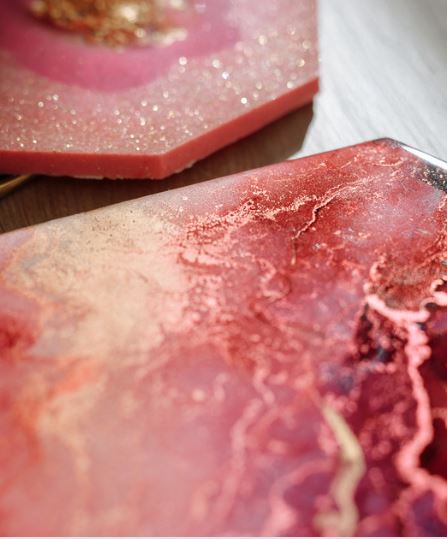
To mitigate these challenges, resin crafters often work in controlled environments with stable temperature and humidity levels, ensuring that the conditions remain consistent throughout the curing process.
This attention to environmental factors helps minimize the risk of imperfections and maintains the integrity of the final resin creation.
4. Inconsistent curing
Inconsistent curing is a common issue in resin crafting and can lead to various imperfections, including dimples in the cured resin.
This type of curing occurs when the resin does not harden or solidify uniformly across the entire surface.
This can happen for several reasons, such as uneven mixing of resin components, improper curing temperatures, or incomplete curing times.

When some areas of the resin cure faster or slower than others, it can result in a surface that is not smooth and may exhibit dimples, uneven textures, or cloudiness.
To prevent inconsistent curing, make sure you are mixing the resin thoroughly. Stick to the manufacturer’s recommended curing conditions.
Proper curing techniques are crucial in achieving a uniform, flawless finish in resin crafting projects.
5. Fix Resin dimples by Mixing properly
Mixing errors in resin crafting can lead to a variety of imperfections, including dimples in the cured resin. These errors occur during the preparation stage when combining the resin and hardener components.
Inadequate or improper mixing can result in several issues, such as uneven distribution of the hardener, insufficient blending of the components, or the introduction of air bubbles.

When the resin and hardener are not thoroughly and uniformly mixed, the curing process becomes inconsistent, leading to areas of the resin hardening at different rates. This can cause dimples, streaks, or cloudiness in the finished piece.
To avoid mixing errors and their associated imperfections, resin crafters must follow precise measurement ratios.
To also help, mix the components slowly. Use proper techniques like scraping the sides and bottom of the mixing container.
By doing so, the resin will cure more evenly, reducing the risk of dimples and other irregularities in the final product.
6. Poor Mold Choice
Selecting an inappropriate mold can also lead to dimples and imperfections in resin casting. The choice of mold material and design plays a significant role in the quality of the finished resin piece.
Using molds with intricate details, undercuts, or a rough texture may make it challenging to release air bubbles or achieve a smooth surface during the casting process.
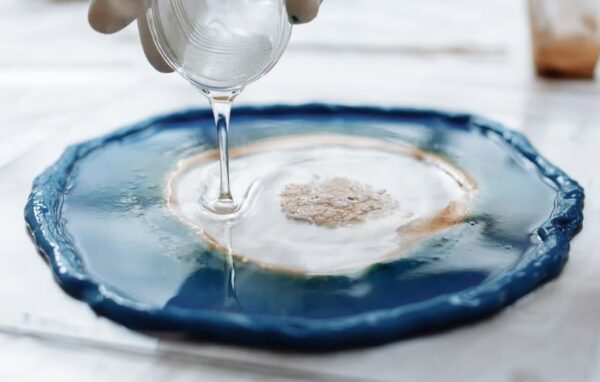
To avoid these issues, it’s important to carefully choose molds that are well-suited for resin casting, have smooth interiors, and are properly prepared with mold release agents when necessary.
Ensuring that the mold’s design allows for easy air bubble release and resin flow can significantly reduce the risk of dimples and other surface imperfections in resin castings.
7. Too much Colorant has been added
Using an excessive amount of colorant or pigment in resin crafting can lead to various imperfections, including dimples and other texture irregularities.
Resin colorants come in various forms, such as liquid dyes, powders, or mica powders, and adding too much can impact the resin’s viscosity and curing properties.
When an excess of colorant is introduced, it can alter the resin’s chemistry, making it thicker and less predictable in its curing process.

This change in consistency can result in an uneven distribution of colorant and an inability of the resin to self-level properly. Consequently, areas with too much colorant may create dimples or appear uneven on the resin’s surface, as the colored regions might not cure uniformly.
To avoid this issue, follow recommended colorant dosage guidelines. Don’t overdo it with the coloring. Too much color can affect the curing and surface quality.
8. Resin Has Expired
Using expired resin for crafting can introduce various issues, including dimples and imperfections in the finished product. Resin, like many materials, has a shelf life and can degrade over time.
When resin expires, its chemical properties may change, making it less reliable for curing and producing a flawless finish.
Expired resin may have difficulty curing evenly, leading to irregularities on the surface of the final piece.

The resin may also become more prone to the formation of air bubbles, which can result in dimples and a less-than-smooth appearance.
To avoid the problems associated with expired resin, check the product’s expiration date, store resin according to the manufacturer’s recommendations. Resin should be used up before it has expired.
Using fresh, unexpired resin will help achieve more consistent and high-quality results in resin crafting projects. Read up on how to tell if resin has expired to learn more.
9. Poor Quality Resin
Poor-quality resin can indeed contribute to a range of imperfections in resin crafting, including dimples on the finished piece. The quality of resin can vary depending on factors like the manufacturer, the formulation, and the ingredients used.
Lower-quality resin may have impurities, inconsistent curing properties, or a higher susceptibility to issues like air bubble entrapment. When bad quality resin is used, it might not cure evenly, leading to dimples and surface irregularities.

To prevent these problems, purchase from reputable manufacturers known for producing high-quality products and to follow the manufacturer’s instructions carefully. Store resin and hardener properly so that it doesn’t break down.
Using a high-quality resin can significantly reduce the risk of imperfections and enhance the overall outcome of resin crafting projects.
Here are two resins that are good quality and give great results:
Choose The Right Resin Type For The Project:
There are different types of resins that are specifically formulated for different projects.
A type you can try is UV-cured resin, which differs from traditional epoxy resins in its rapid curing under ultraviolet light.

This the other common type is epoxy resin. Epoxy resin is a versatile and durable synthetic material that, when mixed and cured, forms a strong, clear, and glossy solid.
UV resin is used in various applications, including art, construction, and industrial settings, for its adhesive and protective qualities.

Epoxy resin is known for its ability to bond, seal, and coat a wide range of surfaces, making it a popular choice for projects that require a resilient and glossy finish.
Understanding the distinctions among various resin formulations is important, as each may have susceptibilities to dimpling.
Special kinds of resin give artists many choices to use for their projects. Choose the right resin for each job, especially when you are experiencing lots of dimples and pits.

Some Common Uses For UV Resin
UV resin’s fast curing time and clarity make it an excellent choice for projects that require precision and a crystal-clear finish. Here are some common uses that will not normally get pits and divots. Keep in mind that UV resin is for small projects, not large pours or deep pours.
Jewelry Making:
UV resin is popular in jewelry crafting, where it is used to create pendants, earrings, rings, and other intricate, transparent designs. Its rapid curing under UV light makes it ideal for small, detailed pieces.
Miniature Crafts:
It’s commonly employed in creating miniature models, figurines, and dioramas. Its precision and clarity are advantageous for capturing intricate details in these tiny works of art.
Encapsulating Objects:
You can use UV resin to encapsulate and preserve objects within clear resin. This is often seen in projects like paperweights with embedded flowers or keepsakes.
Coating and Sealing:
This type of resin can be used as a protective and glossy coating for various surfaces, including artwork, wood, and photo transfers. It adds a clear, durable layer that enhances the appearance of the object.
Repairs and Filling:
Small repairs, like fixing chips in glass or filling in gaps in woodwork, can be achieved using UV resin. It offers a quick and reliable solution for minor fixes.


Some Common Uses For Epoxy Resin
Epoxy resin’s versatility, strength, and adhesive properties make it a valuable material in various industries and creative endeavors. Choose the right resin for the job to help prevent dimples in your finished work. Do not use UV resin for deep pours or you will get dimples. Epoxy resin is the best choice for these concepts.
Art and Crafts:
Epoxy resin is widely used in art and craft projects, such as creating paintings, sculptures, and tabletops. Its self-leveling properties and durability make it a popular choice for artists and craftsmen.
Woodworking:
Epoxy resin can be used for filling cracks, knots, and voids in wood, producing a smooth, polished surface. It’s often applied to wooden tables, countertops, and river tables for a glossy finish.
Boat Building and Repair
This type of resin is used in the construction of boats, as it provides a strong and watertight bond. It is also used for boat repairs, including sealing and patching leaks.
Automotive Repairs:
Two part expoxy resin is used in automotive repairs to fix and bond various materials, such as plastics, metals, and fiberglass. It is also used for coating and protecting car surfaces.
Industrial and Construction Applications:
In industrial settings, epoxy resin is used for floor coatings, electrical insulation, and as an adhesive for structural elements. It offers high strength and chemical resistance, making it suitable for a variety of construction and maintenance tasks.
River Tables:
A river table is a type of furniture that is often made using epoxy resin. It gets its name because it typically includes a long, meandering “river” of resin that flows through a split in a piece of wood.
This creates a beautiful and unique design, where the wood and resin combine to form a stunning centerpiece. Check out our article of some of the best epoxy river tables with rocks.

We hope you found this post informative and enjoyable and you can now go and fix resin dimples. If you have any questions or topics you’d like us to explore in the future, please leave a comment for the community.
Thank you again for being a part of our resin community, and we look forward to bringing you more valuable content in the future. Until next time, happy reading!

